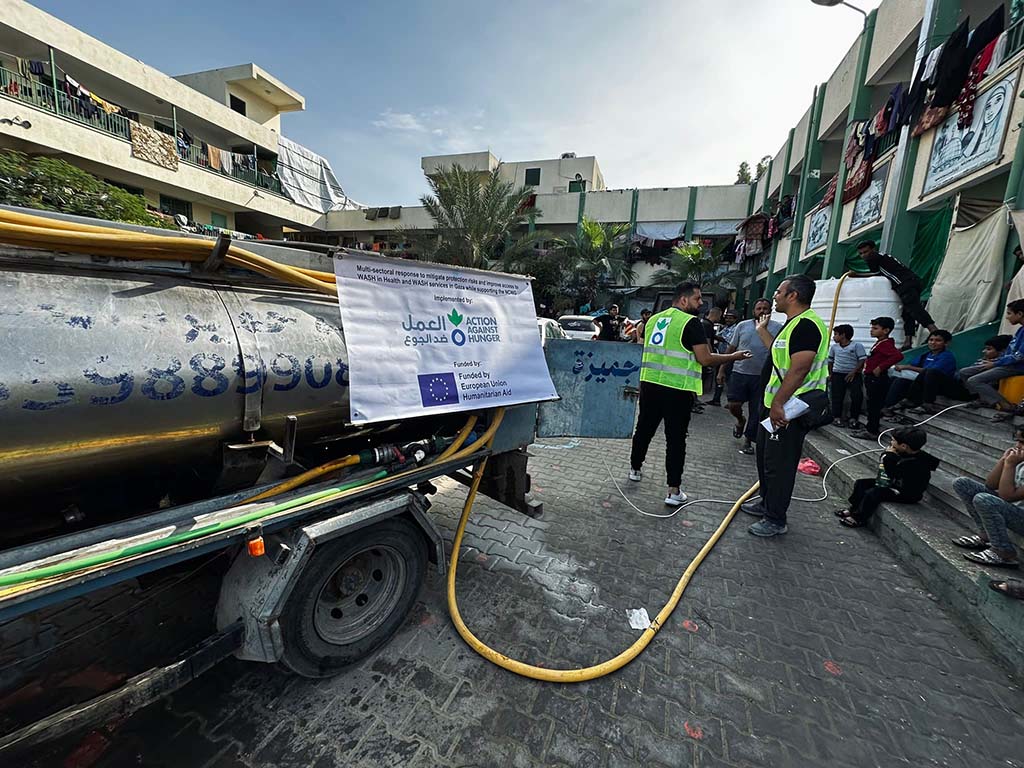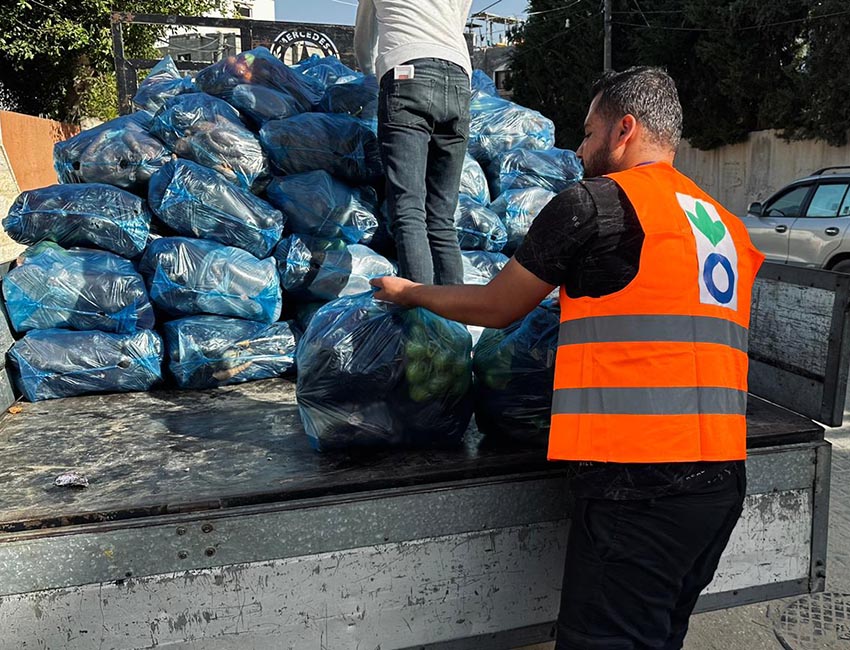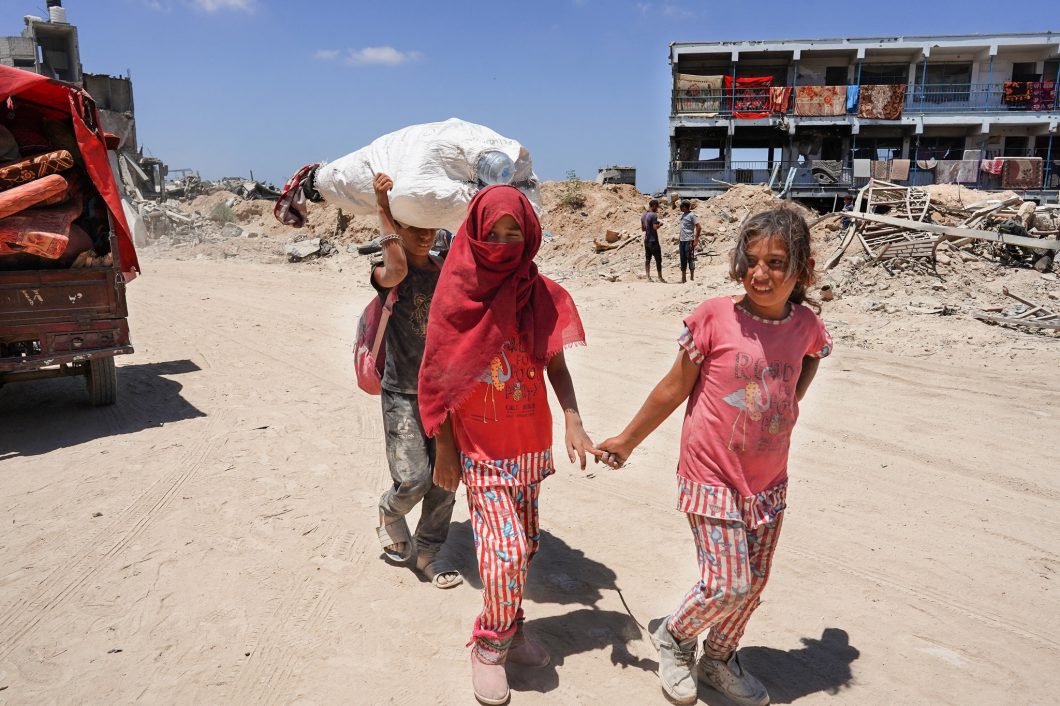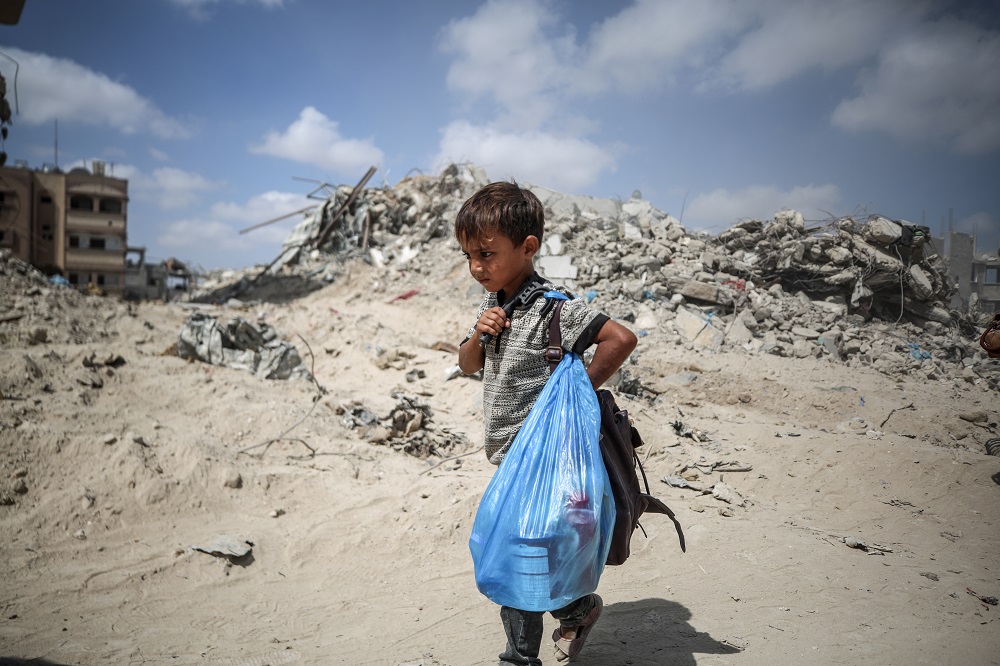The death toll is rapidly rising due to the conflict in Gaza. Over 30,000 people have been killed, with nearly half of that number children.
But soon, deaths caused by hunger and poor sanitation will overtake those killed by bullets or bombs.
What is the risk of famine in Gaza?
50% of people throughout Gaza are now at imminent risk of famine according to a recent report from the the Integrated Food Security Phase Classification (IPC) – which determines the severity and extent of acute and chronic food insecurity and acute malnutrition within countries.
Getting humanitarian aid to northern Gaza is nearly impossible, with 160,000 people there on the brink of starvation.
One-third of children in northern Gaza are suffering from severe acute malnutrition – the most life-threatening form of hunger.
“Malnutrition, dehydration, and starvation target the most vulnerable. The risk is much higher the younger the child.”
In northern Gaza, people go entire days without eating. There are also severe food shortages in Rafah in southern Gaza, where 2 million people are stuck after being forced to leave their homes.
The amount of humanitarian aid currently coming into Gaza is completely insufficient. Before October 2023, there were 500 aid trucks entering a day. Now, it’s often less than 100.
With farming land and fishing boats destroyed by bombing and food markets closed, Gazans find themselves highly dependent on food aid. But the continuing blockade means it’s extremely difficult for many to get the food they need to survive.
Soaring prices have made the little food that’s available unaffordable for most people. Before October 2023, 1kg of lentils cost 85p. Now, it’s £17. 1kg of wheat flour also used to cost 85p. Now, it’s £25.
81% of households also lack access to access to clean water. Gazans rely on three water pipelines for their drinking water, but these have been either been closed or only left partially open. Without clean water, there’s an increased risk of both malnutrition and the spread of infectious diseases.
According to WHO and UNICEF, children in southern Gaza are getting just 2% or less of the recommended daily water consumption.
“The catastrophe in Gaza is only worsening and we must do everything we can to prevent further death, hunger, and destruction. Famine is preventable if there is an immediate end to hostilities and an immediate and permanent ceasefire.”
How is Action Against Hunger helping?
We’re one of the few humanitarian organisations still working in Gaza. Although aid has been blocked, thanks to our networks and 19 years of experience in Gaza, we’ve be able to continue our work. We’re doing everything we can to help people in dire need.
Since October, we’ve been able to reach over 800,000 people in Gaza so far. Our work has included:
- distributing over 8 million litres of drinking water
- building 30 toilet blocks and handwashing stations
- supporting 200,000 women and girls through our water, sanitation and hygiene services
- distributing food baskets to over 15,000 people – one food basket is enough to feed a family of six for 15 days
- providing a cleaning service in shelters for people fleeing their homes

Our teams distribute water from a truck at a shelter for those forced to leave their homes.
What is a famine?
A famine is defined as the most severe kind of hunger crisis. It’s very rare, but when it does happen, it means there’s an extreme shortage of food. And that several children and adults within a certain area are dying of hunger on a daily basis.
Some deadly emergencies happen suddenly, like earthquakes, floods, and other natural disasters. This is not the case with famine. A famine happens slowly, caused by long-term conflict, climate shocks, extreme poverty, and other drivers.
Famines are never inevitable – they’re always predictable, preventable, and man-made.
What is the link between conflict and hunger?
Armed conflict is the biggest single cause of hunger in the world today.
Conflict affects food security and nutrition in many ways: it can reduce the amount of food available, disrupt food production and affect people’s ability to access food, markets and healthcare.
Gaza is no different.
Out of the 97 bakeries that were in region before October 2023, only 15 remain open. The 1.7 million people forced to leave their homes also lack cooking utensils, water, and fuel, which prevents them from preparing nutritious food when it becomes available.




